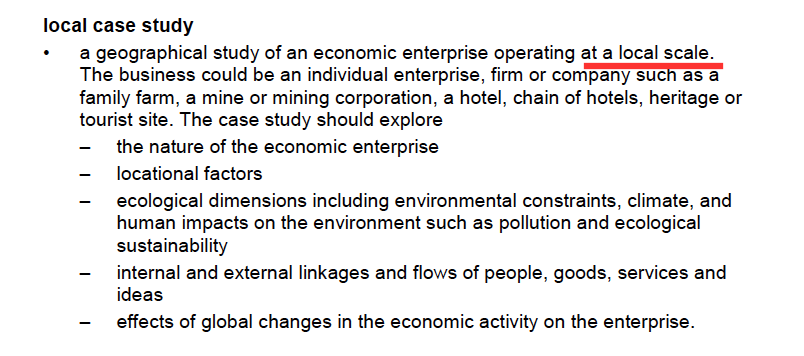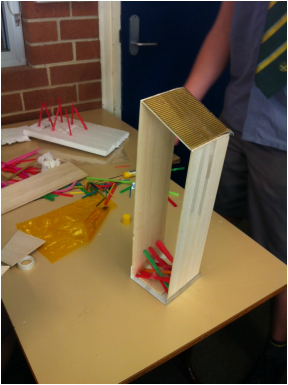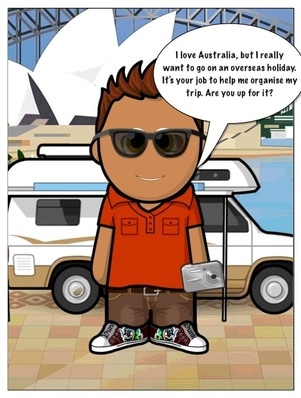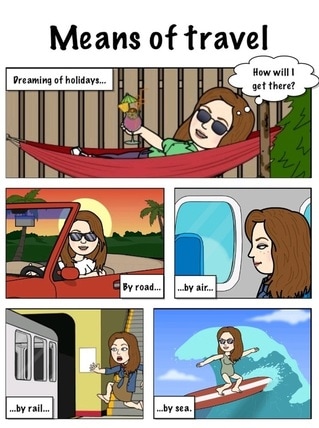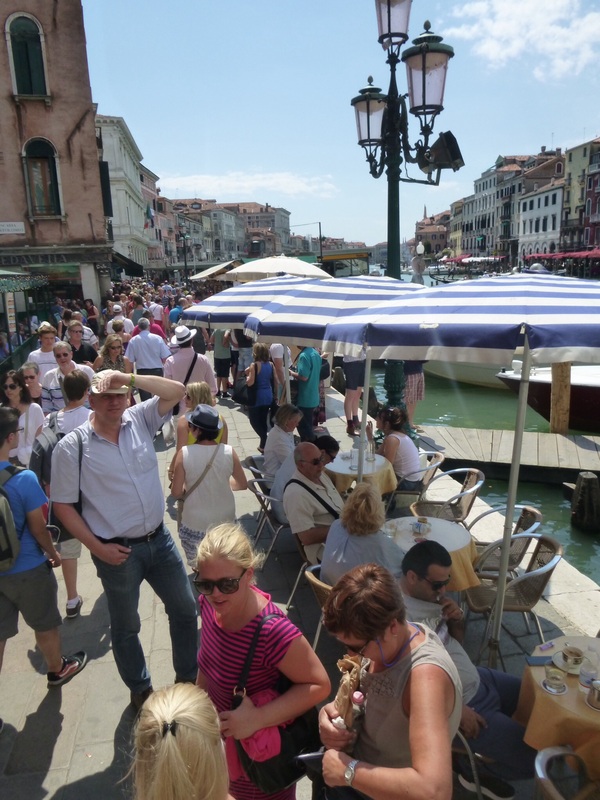|
A previous post written in 2014 described the impact that tourism was having on Venice. You can read this post here:
Tourism - Are we loving Venice to death? Part 1 The COVID-19 pandemic, and it's impact on global tourism since that post has resulted in a new range of impacts and an opportunity for reassessing the nature of tourism on the island. The pandemic has resulted in months of empty shops, restaurants and hotels. As Venice begins to open with some slight changes (more takeaways, outdoor dining, etc) a broader review of tourism on the island must be considered. The over tourism being experienced prior to the pandemic was pushing residents out due to rising house prices, grocery stores were being replaced with souvenir shops and accommodation was being replaced with Airbnbs. Large cruise ships were bringing in tourists who were only on Venice for day trips resulting in them rushing around to the see the main sights, congregating in concentrated areas, and economic benefits not being shared by the wider community. The pandemic has provided an opportunity for residents to reclaim the city, to try to make tourism more sustainable and diverse. Some of the suggestions being considered are limited access to attractions by introducing quotas and booking, and more regulation of tourist flows.
0 Comments
Great White Bear Tours uses custom built all terrain vehicles called Tundra Buggies. These allow unique access to the tundra environment around Churchill providing opportunities for viewing of a range of wildlife such as polar bears, arctic foxes, caribou and migratory birds. They operate tours in Spring, Summer and Autumn, and tours vary according to the seasons. In Spring they offer tours to see the Northern Lights (Aurora borealis), in Summer they operate bird watching and wildlife viewing tours and in Autumn/Fall they run Polar bear viewing tours. The company offer both one-day tours and multi-day tours. Visitors can choose to stay at the White Bear Tundra Lodge for multi-day trips. This is a custom-designed rolling hotel to enhance wildlife viewing opportunities. The lodge consists of five large units linked together - two sleeping units with shared sleeping quarters, bathroom and showers, and separate lounge, dining and kitchen facilities. The map below indicates the location of the White Bear Tundra Lodge in relation to Churchill. Examine the case study in more detail on the 12 Geography People and Economic Activity site: Nature of the economic enterprise Locational factors Ecological dimensions Internal and external linkages Effects of global changes Is Great White Bear Tours a local case study? The NSW Stage 6 Geography syllabus requires students to examine a local case study for the People and Economic Activity topic. Depending on the economic activity studied, common case studies are local vineyards, hotels, chocolatiers. The syllabus states, "a geographical study of an economic enterprise operating at a local scale." It does not specify that it has to be in Australia, or local to you/your school. While Great White Bear Tours is not "local" to anyone studying the NSW syllabus, it can be viewed as "local" in the sense that it operates within its local area (the tours run in a relatively small geographical area, in the immediate vicinity of the business site). Let's have a look at the references to the local case study in the syllabus... There are two uses of the the word local when referring to the case study in the content section of the syllabus. In the first example it refers to the case study operating at a local level. It does not specify that it needs to be local to you or your school. Below: Screen shot from the NSW Stage 6 syllabus (Content) It is referred to again later in the content section where it refers to an enterprise operating at a local scale. Again there is no reference to it being local to you or your school. Below: Screen shot from the NSW Stage 6 syllabus (Content) What about fieldwork? Fieldwork is an integral part of geographical inquiry and learning. It is a common practice for classes to do their fieldwork on their economic enterprise, particularly if they have chosen a case study close to the school. However, while it is common practice, it is not mandated. If we look what is mandated, the syllabus states that students need to identify methods such as "collecting and analysing field data about economic activity. Note that it doesn't state that the fieldwork has to be based on the economic enterprise (the local case study). In this way a class could conduct fieldwork on Tourism in general, but not their economic enterprise and still meet requirements. There are also many opportunities to conduct virtual fieldwork. Explore some fieldwork options on the Year 12 Geography, People and Economic Activity site:
Fieldwork: Hudson Bay Please note: This is part 4 of 5 for this PBL activity. The whole task can be found at the following posts: Tourism PBL Task 1 Tourism PBL Task 2 Tourism PBL Task 3 Tourism PBL Task 4 Tourism PBL Task 5
Below the line promotions (10 marks) You have been invited to the Sydney Tourism Expo to promote your tourism operation. You will be required to promote your business with a stall. Your stall may have the following items: - a model of your hotel. Your model should demonstrate how your hotel addresses each of the following: Services, Convenience, Social/Environmental Issues and Value. - a copy of your business proposal (Group work Week 2) - a map showing the location of your hotel - examples of your custom products - your business cards and brochures - an audio visual display showing either your website or TV commercial.  Please note: This is part 4 of 5 for this PBL activity. The whole task can be found at the following posts: Tourism PBL Task 1 Tourism PBL Task 2 Tourism PBL Task 3 Tourism PBL Task 4 Tourism PBL Task 5 Create a model of your hotel (25 marks) You have been given a set of materials to build a model of your hotel. Each group received the same materials. You may choose to use a software program to plan your hotel or you may choose just to sketch your plan on paper. Your model needs to look realistic, but it also needs to address the following: - What services does your hotel provide? - How does your hotel address the outcome of convenience for customers? - How does your hotel address social and environmental issues? - How does your hotel provide value for your customers? You have already discussed these issues in group work 3, but now you need to demonstrate your ideas in a practical way. Annotate/label your model to demonstrate these objectives Please note: This is part 3 of 5 for this PBL activity. The whole task can be found at the following posts: Tourism PBL Task 1 Tourism PBL Task 2 Tourism PBL Task 3 Tourism PBL Task 4 Tourism PBL Task 5 Product differentiation (10 marks)
How are you going to make your business stand out from the crowd? How does your business address each of the following (ensure that you come up with some unique ideas): - Services - Convenience - Social/Environmental Issues - Value Create a custom product (5 marks) You decide to design your own product range to sell exclusively at the hotel. Describe your product range, and create a one-off sample of one of your products. Advertising strategies (10 marks) Create an advertising campaign to market your hotel. Include a business card and brochure and either a draft website or TV advertisement. Please note: This is part 2 of 5 for this PBL activity. The whole task can be found at the following posts: Tourism PBL Task 1 Tourism PBL Task 2 Tourism PBL Task 3 Tourism PBL Task 4 Tourism PBL Task 5 Conducting market research & your target market
Market research allows the entrepreneur to understand their customers better, and predict the spending choices they will make. Write a 10 question survey to find out what your target market wants from a holiday? For example, are they after relaxation, adventure, etc. What type of activities are they interested in, how much money they are likely to spend and what types of items or activities they are likely to spend more on? Where would they like to go? Demographics It is also important to know some basic characteristics of your customers including age, gender, spending habits, number of children, martital status, etc. Include some basic questions related to demographics in your survey. Set up a survey on Survey Monkey and send your survey to 10 people to complete. Location The location of a holiday resort is an important factor in its success. What features do you want to be close to? Are there certain parts of the environment or the settlement that you won't want to be close to? Select an appropriate location for your hotel. Use Google maps to find the location for your hotel. Take a close-up screenshot of the location and annotate the image showing exactly where your hotel will be located .Assess the pros and cons of this location. Competition Undertake research on the hotels or tourism operations that you will be competing against. This will include local competitors but may also include other Pacific resorts. How do you intend to gain a competitive advantage over these other businesses? Task: Put together a business proposal outlining your plans for your new business. It should have the following structure: Business name (1 mark) Names of entrepreneurs (1 mark) Entrepreneurial skills (3 marks) Key features of the business (5 marks) Market research findings (including target market and demographics) (10 marks) Location (2 marks) Competition (3 marks): Include your logo on all documentation. (Mark for logo - 5 marks)
Task 1
Organise yourselves into groups of 3. You will be focusing on a hotel and tourism operation in the Pacific islands aimed at the middle-income to high income/luxury market. Part 1: Being an entrepreneur What personal attributes do your team members have that will make you successful entrepreneurs? Part 2: Business Opportunities Your team has experience in the tourism and hotel industry. Come up with a series of ideas that are innovative and original for your tourism operation/hotel. Create a mind map or list of these ideas. Brainstorm ways that your business might address each of the four emerging opportunities for business (not all of these will be relevant to your business): - high technology - small office/home office - aged services - franchising. What is the name of your new business? Design a logo for your business using a graphic software application such as Adobe Photoshop, Adobe Fireworks, etc.
Choosing destinations. You have been given two locations that you must include in your trip. What other cities or towns would you like to visit? Why? What activities would you like to undertake at each location? Create a mind map using wordle, or bubbl.us which answers the questions above. (If you don't want to use one of these applications you can try to create it in Word or another program you are familiar with.) You must include 15 activities across the 5 locations.
Task: Create a travel brochure for one European location that you would like to visit. In doing so, use Abobe Fireworks or Photoshop to edit images. You may choose to use Publisher, Word or PowerPoint to create your brochure. Make sure that you save your brochure as you will need to use the file in a later task. Ensure that you only use images which are copyright free. Keep a seperate file showing where you got each image from. Organising travel Create your travel itinerary Now it is time to make the decisions about exactly where you want to go and how long you will spend at each location. Your itinerary will need to include:
Include at least one ecotourism activity or eco-accommodation. Keep in mind your budget and time constraints: $15,000 each and 6 weeks. Present your itinerary as a detailed table (include the dot point above). Create a separate table which outlines how you will allocate your budget. Create a map using Google Maps or Google Earth which shows the journey you will take. Exclude your flight to and from Sydney on your map so that you can show a high level of detail. Planning a trip
You will have to consider the following issues when planning your trip: official requirements and documents, language issues, medical issues, culture, political instability and insurance. Passport Examine this site: https://www.passports.gov.au/Web/index.aspx Describe the process of applying for a passport. Create a passport for your self. Use a comic site (such as bitstrips, weemee, etc) to create an image of yourself. Make sure you use a fake address and personal details. It is not wise to use a real photograph of yourself or to include your personal details. Visa Examine this site: http://www.dfat.gov.au/visas/ What visas will you need to apply for? What dates will you be entering and leaving each country? Travel warnings Examine this site: http://www.smartraveller.gov.au/zw-cgi/view/Advice/ Examine the travel warnings for each of the countries you will be visiting. What precautions will you need to take in each of these countries? Create a table which includes all of the information that you have collected. Medical requirements Read about travel insurance here: http://www.smartraveller.gov.au/tips/insurance.html What health issues do people generally face when they are travelling? What risks do you face travelling in the countries that you have chosen? Will any of the activities that you undertake put you at risk of harm? Language issues When you travel to a non-English speaking country you will need to learn how to get around and how to ask for help. Create a bilingual comic involving you asking for directions to the Eiffel Tower. (Paris - English and French) OR Create a bilingual comic involving you asking for directions to the Brandenburg Gate. (Berlin - English and German). Your comic must have a minimum of 6 frames.
For more resources to support 12 Geography - People and Economic Activity (Tourism), see the Economic Activity site.
Edit: An update for this topic has been posted in a new post Tourism - Are we loving Venice to death? Part 2. |
Categories
All
Archives
May 2024
|


